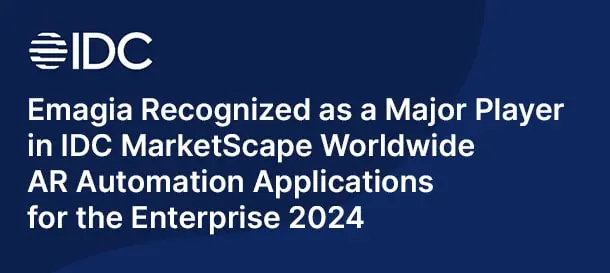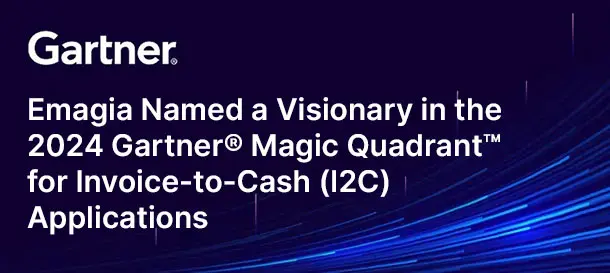The past couple of years has brought renewed focus and pressure on accounts receivable and the order-to-cash process of enterprises with a global reach. Investors are looking closely at cash flow generation. But manually dependent, siloed data and processes weigh down the process of converting orders to cash. They are slow, expensive, and serve neither customer nor enterprise well. AI-powered O2C automation (O2C AI Automation) offers a better way.
In 2020, the pandemic brought the importance of cash flow into focus. In 2021, mergers and acquisitions took a tremendous jump, with private equity players highly active in the mix, which continued to spotlight accounts receivable. And that M&A activity will continue strong in 2022.
Mergers and acquisitions bring new challenges to receivables in increased volumes and complexity. Simultaneously investors are extremely interested in cash flow, credit availability, collections efficiency, and headcounts to do more with less just as workers reassess their priorities. So, the considerable pressure on accounts receivable and the order to cash process escalates. But artificial intelligence-powered automation is enabling organizations to meet these rising demands.
Common Manual AR Processes Are Costly
Standard operations, heavy on manual processes with limited automation, negatively affect an enterprise’s financial state. Finance leaders must always anticipate their cash position, but they lack timely, accurate information. Their companies suffer slow credit approvals, collection delays, inaccurate cash-flow forecasting, expensive document processing, and an inability to scale with growth.
Large organizations facing increased complexity and volume need control and visibility. But manual and semi-automated processes cannot offer them. AI-powered platforms and software, however, are enabling enterprises to overcome these problems, handling the massive volume of typical transactions automatically, freeing human staff to focus on top customers and exceptions.
AI-Powered “True” Automation for O2C
Consider three ways that AI-powered automation supports accounts receivable and the order-to-cash process:
- Replacing manual document processing,
- Integrating accounts receivable data for the end-to-end process, and
- Providing visibility and reporting.
Manual Document Processing vs. IDP
Manual processing of myriad documents constitutes a considerable burden to finance teams. Unfortunately, technologies like OCR and robotic process automation offer incomplete help. For example, OCR can convert characters in an image to data without understanding the meaning. However, an intelligent document processing (IDP) system can correctly interpret and convert data to a usable, structured format through AI and machine learning.
Leading IDP systems represent a tremendous advance in document processing. The information contained in various semi- and unstructured documents has required manual intervention to convert it to usable, structured data. But through the application of deep learning, natural language processing, machine learning, and analytics, processing documents becomes touchless for 90+ percent of such documents as a remittance advice, checks, lockbox images, bank statements. Email, PDFs, and image files are no longer impediments to automated data capture.
Across-the-Board IDP Value
The value of IDP applies to receivables and cash applications and also credit-related documents, starting with the credit application, which is often on paper or a PDF. Similarly, it captures and converts reference and credit bureau information in various formats from various sources.
As a result, intelligent document processing dramatically trims data capture and input time, contributing to shorter pay cycles. IDP reduces cost and scales to allow enterprise growth without headcount increases.
Process Integration
For effective hyperautomation, AI-supported AR and O2C platforms include a single data repository housing all relevant data. Then the functional applications such as credit analysis, EIPP, collections, deduction management and cash application work in a coordinated fashion, the left hand knowing what the right hand is doing.
So, for example, collectors are not calling customers about invoices they have already paid. Instead, with much faster cash application recorded in a single data repository, customer interactions happen with an accurate, timely picture of invoicing and payment status. As a result, inaccurate order holds based on old data are drastically reduced.
Order-to-cash applications and processes have been siloed, thus operating on incomplete information. That negatively impacts the customers’ experience. Whereas when all applications work from a unified repository supported by an AI digital assistant and real-time data, the customer experience is greatly enhanced. Having data in a single repository also saves time, improves reporting accuracy, and contributes to a quick close.
Visualization & Reporting
Another vital aspect of a modern AI O2C automation platform is the visibility they provide. Documents and status are accessible. When engaging with customers, collectors and dispute managers have real-time data at their fingertips, which speeds problem-resolution and payment.
Management has an accurate picture of AR status through visualizations and reporting. Further, AI and analytics aid collections in predicting and prioritizing collection activities (not to mention automatic collection activity by an AI digital assistant, allowing 100 percent customer touch).
Finance executives need to predict cash flow for cash management. Analytics and machine learning, operating on a single, complete set of data, analyze historical customer data and provide increasingly accurate cash flow forecasting.
AI, Analytics, Aggregate Data and Accounts Receivable
These are a few ways that artificial intelligence, analytics, and modern data management are changing financial operations, including accounts receivable and the order-to-cash process. Outcomes are emphatic, saving time and money, enhancing customer experience, changing staff responsibilities and improving morale.
Contact Emagia for a look at an AR/O2C platform that Gartner, IDC, and The Hackett Group have cited as a leader and find out all that it can do.




